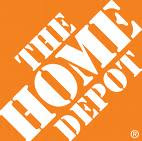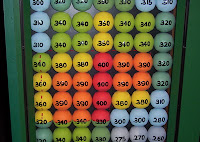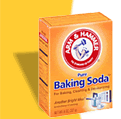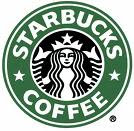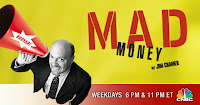
It appears I may have been a bit to rash with Mr. Frank Blake, the new CEO at HD. After reading the transcript from today’s conference call it appears that he may not be the shareholder patsy I initially thought he was. This turn of events also has me now looking much closer at shares of HD. Let’s get to the call before we run out buy any though. In it Blake said of the very supply business that only last week the rumor mill had on the block to be sold:
“The business exceeded expectations for the year, despite softness in the residential construction market. It also clearly gained market share in the fourth quarter and throughout the entire year.
Why then would we even consider selling Supply? We are past, present, and future, a retail business. To get the most value for Home Depot as a whole we would need, I believe, to integrate Supply with our retail business. While that integration effort might not be a complete hairball, it is sufficiently difficult to warrant checking — before we begin — on whether we can create more shareholder value through other alternatives, such as a sale. Once we integrate the businesses, a subsequent sale is much more difficult. If we can create more shareholder value now, through a sale or other alternative, then that’s what we will do. If not, we won’t.”
I know what you are thinking, “Is this Frank Blake or Bill Clinton?”. “We will, we won’t, it depends on what the definition of sell is”. There does appear to be a whole bunch of taking both sides here and Blake is hedging statements to keep both sides happy. I believe Blake is just holding off those calling for the sale until they get the details of the Supply integration together for presentation. In order for us to better decipher what may actually happen, we need to dig deeper in the call.
For me, the relevant details were provide by Joe DeAngelo,COO & EVP. This is a little long but important.
“Now let’s turn to Supply. 2006 was a great year for Supply, as we exceeded our financial targets, accelerated our Hughes integration plan, and built a strong foundation for future growth. For the fourth quarter, Supply sales grew by 64% and operating earnings grew by 20%. For the fiscal year 2006, Supply delivered sales growth of 162%, and operating earnings growth of 151%.
Supply’s fourth quarter 2006 operating profit was $143 million, with an operating margin of 4.9%. The fourth and first quarters are typically lower operating margin quarters, due to the seasonality of the construction business. For fiscal year 2006, Supply’s operating profit was $800 million, delivering an operating margin of 6.6%.”
What does this mean? The best performing segment at HD is the supply business! To continue:
“Additionally, we are extremely pleased with the integration of Hughes Supply over the last ten months. The Hughes businesses have been fully integrated into Supply. The Supply team committed to $0.01 of earnings per share accretion in fiscal 2006. As a result of the team’s focus and execution, we are well ahead of the integration schedule, and have also outperformed the operating plans, delivering $0.04 per share of earnings accretion.”
In summary, you have a company that is basically two parts, a huge retail business that grew at 2.9% last year and a smaller supply segment that is growing at 164%. The US retail business is mature and to expect anything other than pedestrian growth in the future barring any huge acquisition isn’t realistic. The real growth in HD is in their China and Mexico retail operations and Supply.
The argument for the selling of the supply unit is that it’s purchase has distracted management from the retail operations and caused them to suffer. I asked the question is a previous post and it bears asking again, if Church & Dwight can make selling baking soda and condoms work and Proctor & Gamble can sell toothpaste and hair care products successfully, why can’t Home Depot succeed at selling electrical outlets and umm… electrical outlets? It doesn’t make any sense! We are in the middle of a housing slowdown which is hurting both the retail and supply segments yet despite this, supply has exceeded (crushed?) all expectations. Can you imagine how well they would have done had housing turned around? Retail is not suffering because of the supply purchase, it is suffering because former CEO Bob Nardeli while excelling at organizing HD left a lot to be desired in the people department.
The integration of Hughes into HD Supply was seen as too tough but it has been done and the results to date have been fantastic. It would be hard at this point to justify it’s sale unless of course you are not it this for the long haul. Relational Investors who own owns just over 1% of HD stock has been screaming for the Supply sale. Relational generally holds it’s positions for a couple years and I believe what they are looking for is a quick payoff and then an exit. The sale of Supply would accomplish a short term excess return to shareholder at the expense of long term results. Bad idea.
This whole scenario has me recollecting the HP / Compaq merger that was the genesis for the ouster of Carly Fiorina. Carly was forced out by the board after the merger proved difficult to integrate and did not produce the immediate results shareholders wanted. In addition, investors felt her management style was not “warm and fuzzy” enough. Talk swirled that HP need to break itself up into three pieces to realize full shareholder value. Stop me if any of this sounds familiar. What happened? HP did not break up, Fiorina’s vision of the value of the merger was realized and the stock has more than doubled from $20 to $43 in two years. Just because something is difficult does not mean it isn’t worth doing.
The last two years HD has generated about $6.5 billion in cash flow from operations annually and bought back $2.5 billion in stock each year. There is plenty of room to juice this amount up and make significant progress this year. A $4 billion buyback would reduce shares outstanding by almost 5% next year and still leave room to bump up the dividend again. In lieu of that, a big one time dividend ought to quiet the heard and make the short term folks happy enough to squash the Supply sales caterwauling.
HD grew eps 20%, trades at a pe of 14 (pe/eg of .7, great), has huge cash flows from operations, a growing the dividend, is buying back stock has and a total return yield (my calculation) of 7.8%. There is nothing not to like, I just will not own this company without the supply business. It is too valuable long term. Now, the stock ran up in anticipation of the sale and I expect it might fall should they decide not to do it. It would then be a good buying opportunity.
February 28th is the big day. HD will announce more details at it’s investors conference. Then we will see if Blake has any stones or not. We can assume from what he said earlier that once the integration of supply into retail begins, he would be unlikely to undo it. That leaves us in a “*hit or get off the pot scenario”. Blake needs to either start the integration or start the sale, choose a path. Here’s hoping he recognizes what he has. I said before I would want to own HD shares if they kept the supply business and will gladly apologize for my unfortunate characterization of Mr. Blake as “Bendover Blake” in my previous post, if he makes the right choice.


